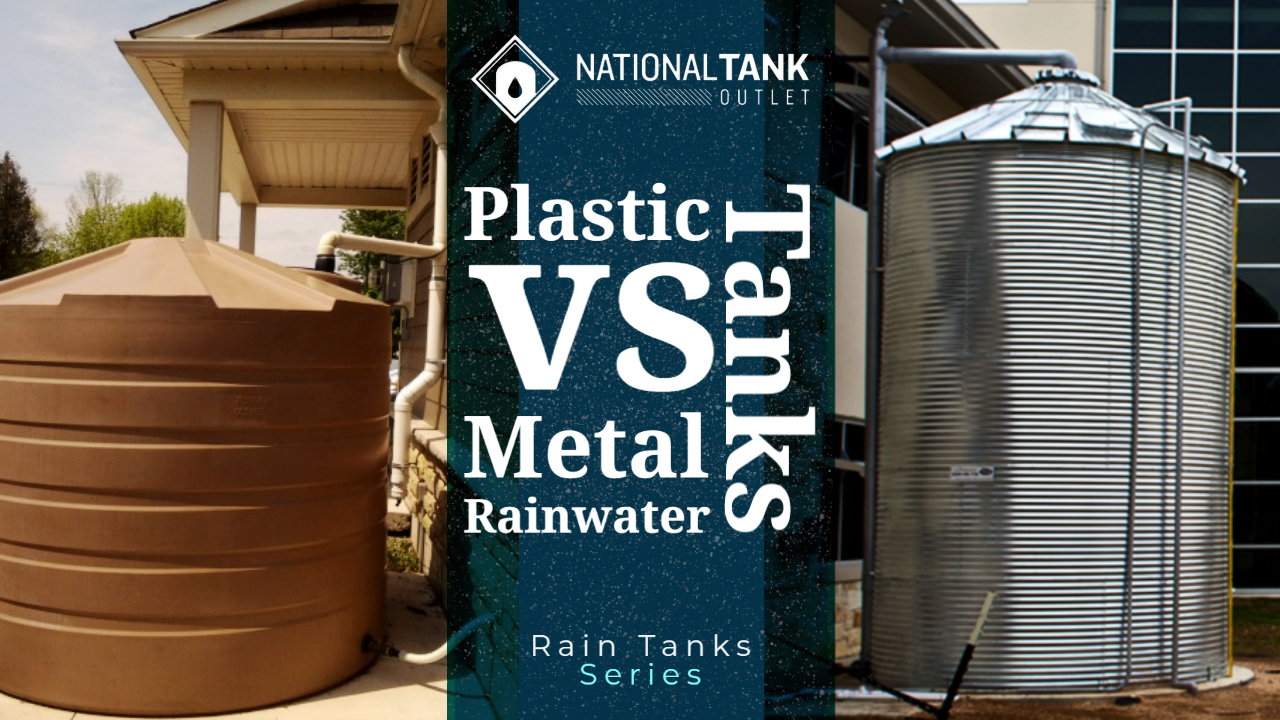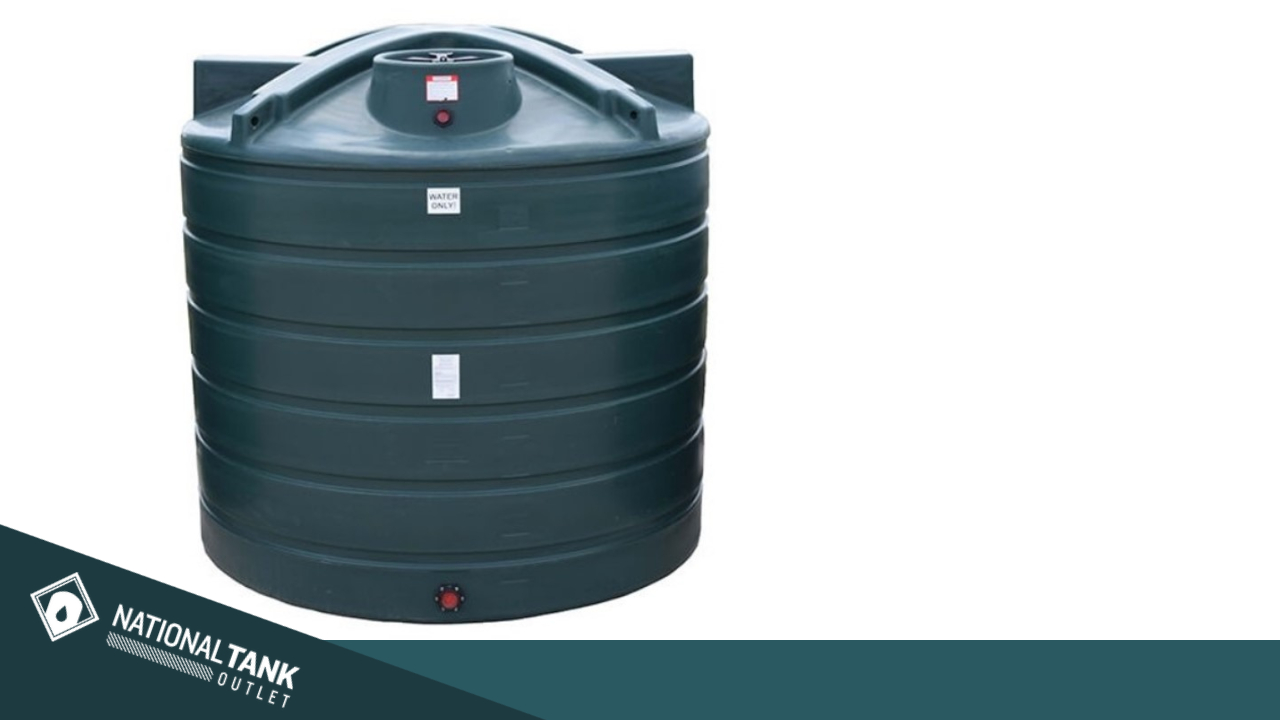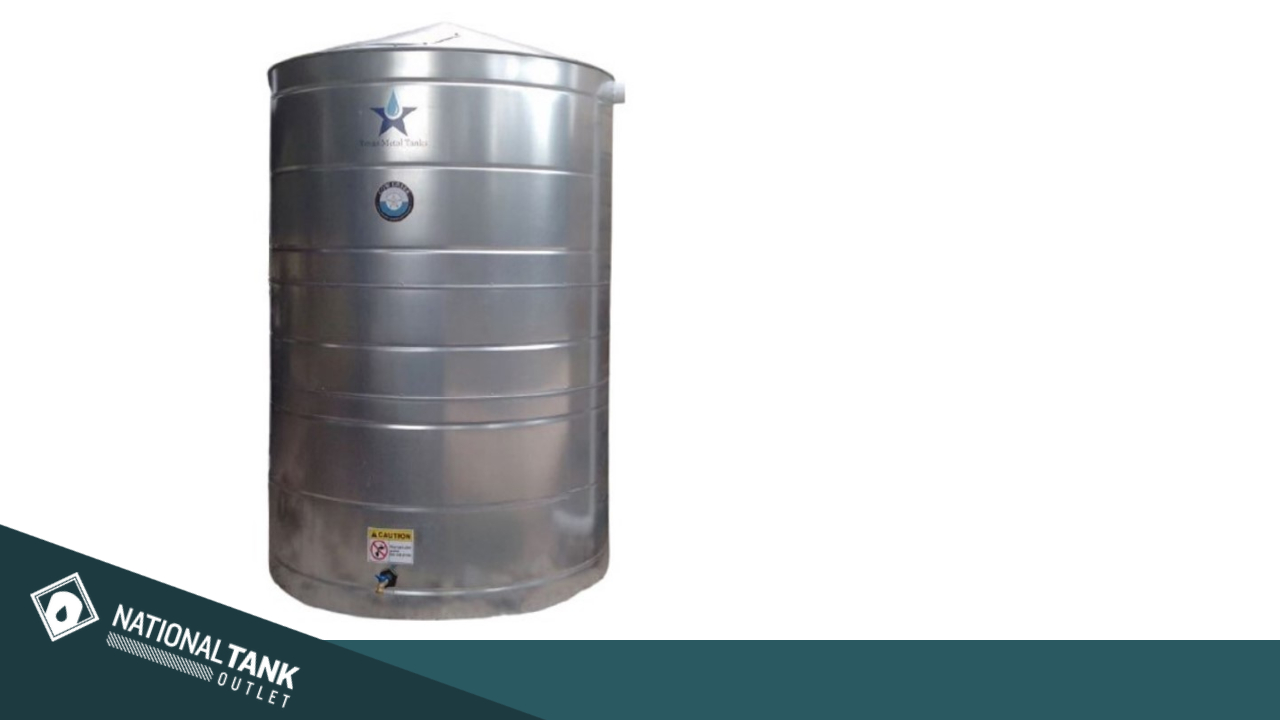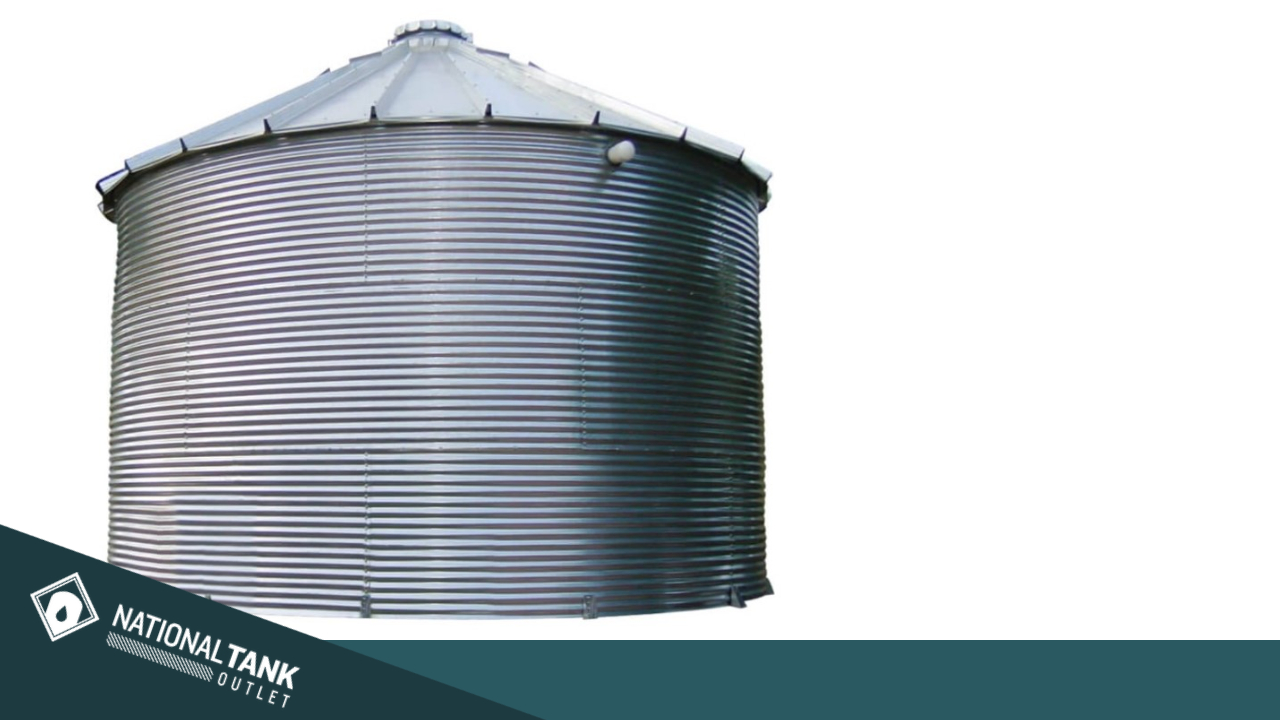
With an increasing awareness on climate change, human environmental impacts, and the need to contribute as part of the solution to water conservation and worldwide sustainability, the practice of rainwater harvesting has seen an increase in public awareness and use among individuals, organizations, farms, and businesses. Along with this increased awareness has risen the question of how to best store rainwater and how to store more of what many consider to be the most valuable resource: water.
There are several options available for storing rainwater. Rainwater storage options include underground or above ground tanks, rain barrels, concrete cisterns, and even collecting and storing rain as surface water in ponds, lakes and reservoirs. Due to the large volume output potential of the practice and the amount of water people regularly need, many rain harvesters choose to keep their captured rainwater in bulk volume storage tanks.
In today’s product market, water tanks are readily available made from either metal or plastic. Specifically, rain tanks are made from stainless steel, galvanized steel, or high density polyethylene. However, not all manufacturer products are created equal, nor are all materials best suited for all application scenarios. In this Rain Tanks Series post, we will compare plastic versus steel rainwater tanks and their overall pros and cons for use in rainwater harvesting.
Durability and Compatibility of the Different Tank Materials
The durability and compatibility of the rainwater harvesting tank material is a good starting point to consider when trying to select a rain tank. Tank material directly relates to maximum rainwater storage volume as the tank will have a total capacity that is based on the engineered capability of the material. Tank material also relates to the tank’s potential service life as well as the long-term purity of the rainwater. Based on your exact use and location setting, the durability (i.e., strength) of the tank material may or may not be a concern.
Mechanical Strength
In terms of sheer mechanical strength and resilience, stainless steel tanks top the list, followed by galvanized steel, then polyethylene. Mechanical strength is used here to refer to a rainwater tank’s ability to withstand rough handling, general wear-and-tear, and impacts such as from an accident involving a vehicle, machinery, falling tree or branch.
This list may be a bit misleading as bulk volume polyethylene tanks are actually robust, heavy-duty containers capable of withstanding much in the way of rough handling, rugged working conditions and physical impacts. As far as bulk volume water containers are concerned in terms of design, application, and available product line, it is fair to say that the mechanical strength of plastic and metal are, in some lights, similar.
Corrosion Resistance
When considering long term compatibility and corrosion resistance in rainwater harvesting scenarios, the ranking order is reversed with polyethylene tanks first and best, followed by galvanized steel, then stainless steel.
Polyethylene is naturally resistant to corrosion from water, seawater, and regular weather events and will not rust.
Galvanized steel is resistant to weather and water exposure due to the steel’s galvanized zinc coating but can potentially become susceptible over time at bolts, fittings and other weak spots.
For stainless steel tanks, there is a potential for reactivity to occur whenever chloride ions are present in the water as well as the possibility for environmental driven corrosion over time. Chloride ions are associated with common salt compounds such as sodium chloride (table salt, NaCl), calcium chloride, seawater, as well as cleaning products such as bleach (sodium hypochlorite, NaOCl). Chloride exposure can lead to pitting in stainless steel and minor tank wall damage that can become a serious problem if exposure continues over time. A stainless steel tank could be exposed to chlorides if located near the ocean or if chemical water treatment will be used.
Sunlight Stability
Polyethylene tanks are resistant to salt chlorides, environmental corrosion and rust, but can be sensitive to the sun’s ultraviolet (UV) energy. This can lead to a shorter-than-projected tank life unless the tank is manufactured with UV stabilizers, sometimes referred to as UV inhibitors. Most modern polyethylene rainwater collection tanks are made with UV stabilizers to protect from sunlight damage and greatly lengthen the tank’s useful outdoor service life.
For metal rainwater tanks, sunlight stability is not a concern. Therefore, metal rain tanks are the best option for limited sunlight concern and outdoor lifespan, especially in UV-intensive geographical regions, such as the tropics to sub-tropics.
Recommendations When it Comes to Rain Tank Material
For polyethylene rainwater tanks, always only purchase tanks made from FDA approved materials to Title 21 CFR compliance, are ANSI/NSF Standard 61 certified, and contain UV inhibitors for outdoor use. Such plastic tanks are high quality containers, sure to last, and guaranteed safe for potable grade water. We offer such rainwater collection tanks here.
When comparing the two materials, both plastic and metal rain tanks are long term acceptable for water handling where total tank compatibility increases with increasing water purity.
Max Volume Capacity
Plastic and steel rainwater harvesting tanks can be ranked according to the max volume capacity available based on tank material type. Galvanized steel has the largest service volume range, followed in second by plastic, and stainless steel tank volumes are last.
- Galvanized steel rain tank volumes range from small capacities around 100 gallons up to very large volumes up to and beyond 100,000 gallons. Galvanized steel tanks with 20,000 gallons and more are commonly chosen for use in water and rainwater handling.
- Polyethylene plastic water tank capacities max out around 20,000 gallons. A plastic tank maxes out in volume due to engineering and design constraints. Plastic tanks, however, commonly feature multi-tank connection ports for easy expansion of total system volumes beyond a single 20,000 gallon tank to as large as needed. The versatility of plastic also allows for many more volume options to choose from.
- Stainless steel water tanks are often limited to 10,000 gallon volumes or less. The max volume of a stainless steel rain tank is limited due to being a more expensive material and the construction requirements associated with large amounts of stainless steel material.
Total Tank Cost
Total tank cost is perhaps one of the most important considerations whenever selecting and comparing rainwater harvesting tanks. The cost of a rainwater tank will directly depend on installation requirements, the base material’s market value, and the tank’s rated volume capacity as larger volumes require more material for construction and will therefore have a higher cost.
In general, tank material costs are ranked as stainless steel being the most expensive, followed by galvanized steel, then plastic in last as the cheapest material option. Galvanized steel tanks, however, have the greatest storage volume and most intensive installation details, which will often cause a galvanized steel tank to have the highest total cost.
Polyethylene plastic rainwater tanks are easily the most cost-effective option with the lowest purchase prices and costs for installation work, replacement, and maintenance.
Comparing Rain Tank Installation
Plastic rain tank types are available for purchase completely assembled and ready for installation and use. Stainless steel tanks are often fabricated in one-piece or provided in a couple, easy-to-assemble parts. High volume galvanized steel rain tanks, on the other hand, have to be shipped in pieces and constructed on-site. Setup and installation of a galvanized steel tank will most often require a professional contractor or a qualified individual due to the size of the tank, foundation preparation and setting, and the amount of work effort involved.
All rainwater harvesting tanks will require some site preparation to ensure proper and safe installation. The extent of preparation required for a tank foundation will depend on the total volume of the water tank, its size and equivalent weight.
Water, and rainwater, weighs 8.34 pounds for every one gallon (lbs/gal). Every rainwater tank foundation must be solid, level, and strong enough to support the total weight of the collected rainwater and storage tank. This is especially true for bulk water volumes. Here bulk volume is used to mean in excess of 15,000 gallons, which as an example would weigh over 125,000 pounds and is a large amount of weight. To approximate how heavy a rain tank may be, simply multiply the maximum storage capacity by the weight of water.
When comparing plastic and steel, larger tanks and volumes will require a more work intensive installation. Due to available sizes and ease of placement, plastic rainwater tanks provide the simplest installations, followed by stainless steel, and last by galvanized steel tanks that often require the largest site preparation due to their increased volumes and required assembly.
Tank Mobility and Ease of Relocation
Between the different rainwater harvesting tank types, how easy a tank is to move and relocate decreases with increasing volume size for both plastic and metal tanks. Plastic tanks tend to have an increased mobility, that is, they are easier to handle than steel tanks as plastic is a lighter material by volume. Many larger plastic tanks also feature combination lifting lugs built into the tank engineering that provide connection points for hoisting and lifting by pulleys, ropes, cranes and other lifting mechanisms and vehicles.
Galvanized steel and stainless steel tanks are heavy by nature of the metal they are made from, making them overall less mobile and more difficult to relocate. Bulk volume metal tanks (e.g., > 15,000 gallons) can be cumbersome or impossible to move without disassembly. Galvanized steel rain tanks that are assembled on-site have to be disassembled for movement, which can be either a benefit or a disadvantage depending on one’s outlook. Plastic rain tanks are the best choice if eventual relocation of the tank or harvesting equipment is expected.
Takeaway | Plastic vs Steel Rainwater Harvesting Tanks
When considering the available material choices for a rainwater harvesting tank, it’s important to understand the specific demands of the application and how the different tank options can meet the needs of the scenario. If your individual rainwater sourcing requires capacities in excess of 20,000 gallons or can benefit from near permanent installation, consider galvanized steel water tanks. Otherwise, consider plastic polyethylene rainwater tanks as they offer a potable grade, low cost, moveable, long term alternative that can outperform metal tanks across many applications. Poly rain tanks can even be connected together to increase the total water capture potential of the rainwater system.
Review our other Rain Tanks Series posts for more information on rainwater harvesting practice, tanks, systems, and accessories. If you have questions or would like help in selecting the right tank and equipment for your own rainwater system, contact us.

Poly Rainwater Collection Tanks

Metal Rainwater Tanks
